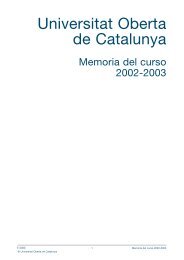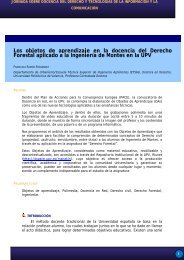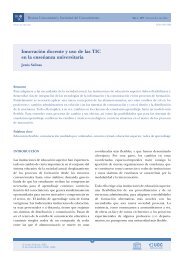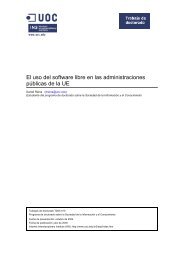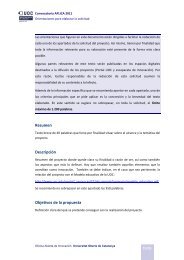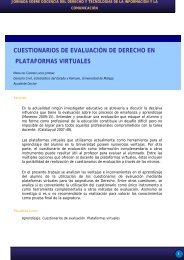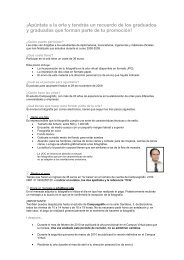e-governance and citizen information - Universitat Oberta de ...
e-governance and citizen information - Universitat Oberta de ...
e-governance and citizen information - Universitat Oberta de ...
You also want an ePaper? Increase the reach of your titles
YUMPU automatically turns print PDFs into web optimized ePapers that Google loves.
E-<strong>governance</strong> <strong>and</strong> Citizen Information 144 ConclusionsThe question of visibility continues to be an important obstacle to processes of integration<strong>and</strong> coordination – not only the visibility of the administrations, but also of the internal administrativeunits that insist on putting their stamp of authority on the projects that they start oron others that they take part in. It is not enough that a project is done; the user should alsoknow who has done it. To this element is ad<strong>de</strong>d the persistent feeling of ownership with respectto the data <strong>and</strong> <strong>information</strong> possessed by each unit. Despite this obstructing factorsome of the most noteworthy projects in the ambit of our international study are aimed attrying to overcome the Administration's bureaucratic structure in channels concerned withthe <strong>citizen</strong>, by creating, for example, single, virtual portals.Another ten<strong>de</strong>ncy we have seen is the planning of global strategies aimed at rationalising existing<strong>information</strong> (<strong>and</strong> putting the back offices in or<strong>de</strong>r) <strong>and</strong> at the same time optimising spending<strong>and</strong> resources invested in the past. Proportionally more efforts are <strong>de</strong>dicated to tidying upexisting contents than generating new ones.These strategies take “self-knowledge” <strong>and</strong> “introspection” as basic points of <strong>de</strong>parture. Alarge number of the projects <strong>and</strong> initiatives begin with inventories to clearly establish thestarting point (with respect to the number of databases, websites, contents managers, telephones,etc.). Contrary to appearances, this collected data is in many cases very difficult toobtain.Generally, then, a transition is seen from one phase characterised by the rolling out oflarge scale, mo<strong>de</strong>l projects to another where the projects <strong>de</strong>signed are more limited inscope (as much in their implementation timeframes as in their objectives <strong>and</strong> predictedimpact). Despite this change of orientation in the scope of the projects, some of the centrali<strong>de</strong>as remain very similar. And, with regard to the obstacles that are encounteredwhen rolling them out, very similar elements are also to be found (compartmentalisation,technological dispersion, lack of coordination, etc.).In this sense, the increasing interaction with the private sector due to the make up of companynetworks for <strong>de</strong>signing <strong>and</strong> carrying out innovation projects <strong>and</strong> their increasinglystrong participation in Citizen Information procedures, creates new problems – or, in othercases, aggravates old ones. The proximity of the two cultures (public <strong>and</strong> private) meansthat certain traditional <strong>de</strong>ficiencies with the bureaucratic system when rolling out transformationprocesses become more apparent: for example, a lack of clear planning <strong>and</strong> the absenceof pre-established evaluation mechanisms that guarantee penalties in cases wherethe project's <strong>de</strong>adline is missed or backward steps are taken (a common problem in the ambitof Administration).http://www.uoc.edu/in3/pic




